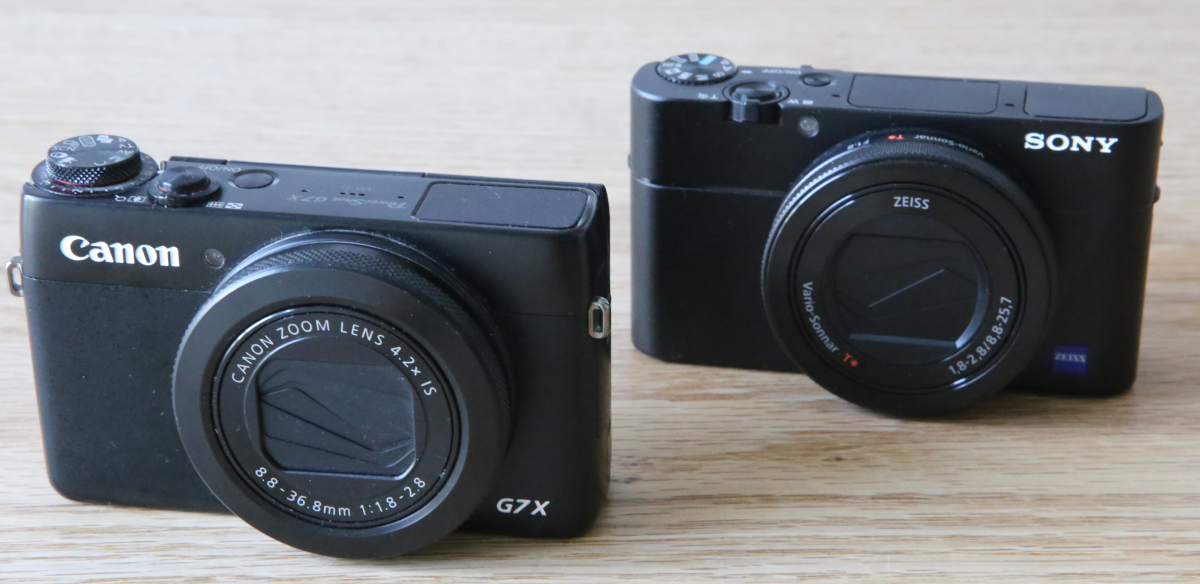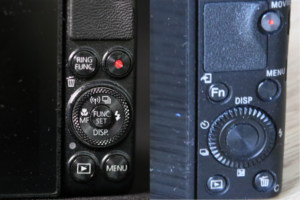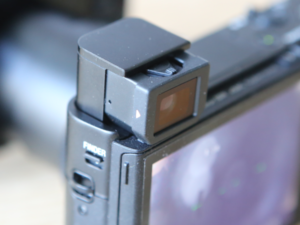
In my opinion, the camera manufacturers have done themselves a big favor with the expert compact cameras. They are just small enough to fit into a larger pocket, have a comparatively large 1″ sensor, are very light-intense and can be operated similar to a DSLR.
The similarities
Here is the practical comparison of the Canon G1X Mark I with the Sony RX100 M5 to see which performs better in everyday life. But first the most important data of the two cameras:
| Canon G1X Mark I | Sony RX100 M5 | |
| Abmessungen (BxHxT) | 105.5 x 60.9 x 42 mm | 101.6 x 58.1 x 41.0 mm |
| Weight | 319 g | 298 g |
| Focal Length (35 mm equ.) | 24-100mm | 24-70mm |
| Maximum f/number | f/1.8 – f/2.8 | f/1.8 – f/2.8 |
| Video | 35Mbit/s MPEG-4 AVC / H.264 | 4k 100MBps (XAVC S) |
| Display | 3″ 1.040.000 Pixel 3:2 | 3″ 1.228.800 Pixel 4:3 |
| Sensor | 1.0 Zoll | 1.0 Zoll |
| Effective Pixels | 20.1 Megapixel | 20.1 Megapixel |

The table already shows that the two cameras are very close to each other in terms of both the inside technic and outside dimensions. The differences in dimensions and weight are not noticeable.
If the two cameras stand next to each other, the differences are hardly visible to the bare eye.
Even the control buttons are similar, although the biggest differences can be found here. Basically, however, for cameras in this segment, the buttons are comparatively small and close to each other, so that the operation needs some getting used to.

Once you have familiarized yourself with the operating concept, many functions can be reached quickly. With one camera you have to turn one wheel more and with the other you have to press a button. There are also no major differences here that would speak for or against one or the other model.
The differences
However, there are a few differences.

- Below the adjusting wheel of the Canon there is a second wheel with which the aperture steps can be adjusted quite easily, as one is used to from the DSLRs (possibly).
- The Sony offers a quick menu. Canon has integrated this into the DSLR, but dispenses with it in its small model.
- The Sony has an electronic viewfinder. It is a 0.39 inch OLED viewfinder (with 100% field of view coverage) that can be folded out as needed. It also has a proximity sensor that automatically switches between the display and viewfinder. Especially when it is very bright, you can select the motive much better with such a viewfinder.
- The Canon writes noticeably faster to the memory card. This means that photos are taken much more dynamically. It got better when we put a somewhat faster memory card into the camera (like the SanDisk Extreme with 170MB/s, Class 10, U3, V30). However, Sony also stores considerably more image information – the image files are about twice as large.
- Of course, those who value videos will be better off with the Sony. This has always been the case and will probably continue to be so. However, this article concentrates on photography.
- The most important difference, however, lies in the measuring points of the focus field. Sony has a total of 315 measuring points (AF phase detection) and 25 measuring points (AF contrast detection). Canon is only satisfied with 31 points. What both have in common is again the type of focusing or focus tracking. Nevertheless, the Sony points quite clearly in this segment.
Advertisment
With such a memory card, the writing speed of the Sony increased traceably (compared to a Class 10, U1, card).
The practice
How are such compact cameras mainly used? Mostly as compact companions for fast photography. Of course you can also take the time for image composition and exposure with the small compact cameras, but often it is the camera that is quickly pulled out to capture the moment.
And let’s be honest: often the cameras are set to automatic white balance and often even to automatic ISO selection. Many people will be using the program automatic or the aperture preselection or aperture priority (i.e. P or A on the selection wheels of the cameras).
So here’s the comparison between these two variants and you can see that the Sony is better at the white balance, but the Canon is a bit better at the details.
Following a detailed comparison in program mode AV, Auto ISO and AWB, F 1.8 (1/100sec) both cameras have selected ISO 125. On the left the picture of the Canon, on the right the picture of the Sony.

The colours were better hit by the Sony, but the detail depth of the Canon is slightly better. However, the better colour choice of the Sony is more visible in the photos.
But if you adjust the cameras manually (including the white balance), you hardly see a difference (above Canon below Sony): F 1.8 1/30sec ISO 200 AWB manual Focal length 9 mm (corresponds to 24 mm in 34mm equivalent)

Conclusion
And that is also our experience. In terms of image results, both cameras are the identical, as are their dimensions and technical specifications. And that’s despite the fact that we’ve been competing the first generation of the G7X against the latest RX100. Both cameras take good to very good photos. However, this only applies if you know how to control the cameras and have the setting ready at the right moment. In the end, it was even surprising how much the photos were similar in the end and how there were hardly any differences between the cameras. After all, there are a few development years between the two models.
Of course, the price plays an important role, because the G7X Mark II currently costs a good 300 Euros less than the Sony RX100 V, whereby we bought the Sony RX100 V for 650 Euros through various promotions (incl. cash back from Sony), so that the difference is less significant. Those who buy the pre-owned G7X Mark I, on the other hand, will also get a very good high-end compact for very little money, because such a compact is already available for about 300 Euro.
Personally, we mainly use the Sony now, because it has the better ISO and AWB automatic features and finds the focus faster. Unfortunately, the lower writing speed of the Sony is clearly noticeable, so that the pleasure is somewhat slowed down. But that’s high level whining.
Advertisment

Leave a Reply